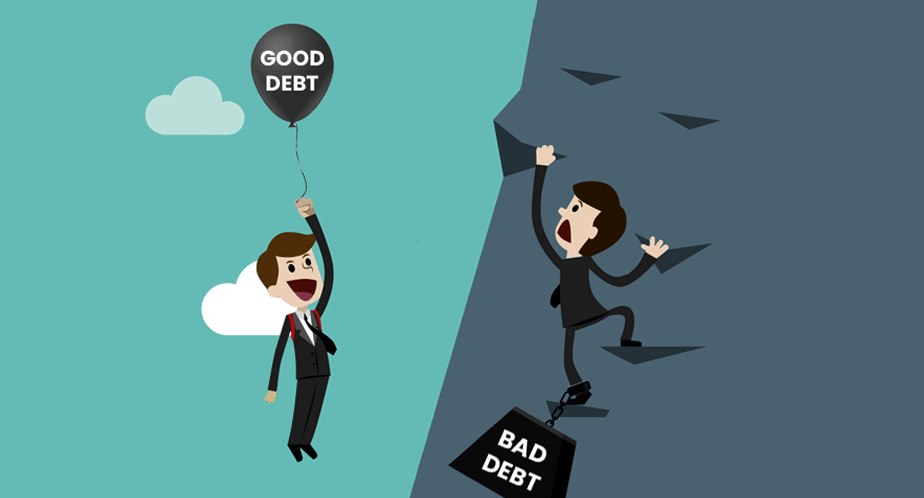A loan for a company, a student loan, a mortgage, or another type of debt is considered “good” debt since it may assist raise income or wealth over time. Debt that doesn’t significantly help your financial situation, such as credit card debt or other consumer debt, is referred to as “bad” debt. These obfuscations are too simple. It is far more difficult to distinguish between “good” and “bad” debt.
This subject merits a second look in order to comprehend the modified debt game rules. Although it is possible to improve your income or amass money via the utilisation of student loans and mortgages, it isn’t always the case. Several variables must be present for “good” debt to be used properly.
What is a Good Debt?
Any loans that can assist you boost your wealth and net worth is what we refer to as “positive debt.” You might have good debt in the form of a mortgage that will eventually be paid off and give you the deed to your home, a student loan that enables you to finance a college education that will launch a lucrative career, or a business loan that will provide you with the funding you need to launch a profitable business.
“Good debt” pays off in the long run, however you’ll still need to account for a regular payment in your budget. It is a financial commitment that appreciates in value over time.
Examples of good debt include:
Higher education debt: Such as student loans, is regarded as an investment for the future. You hope to receive a career in return for taking on this debt, one that will eventually pay off the burden.
Small Business Loans: Debt used to fund personal businesses, such as a small business loan, has the potential to provide future cash flow. These investments might result in profitable returns with prudent management.
Mortgages: In most circumstances, debts used to support real estate ownership, like house loans, are for an asset that is rising in value. Because the asset itself contains equity, they are sometimes regarded as the finest kind of debt.
What is a Bad Debt?
On the other end of the scale, certain debts might eventually cause worse financial problems. Any high-interest consumer loan that doesn’t significantly aid you in achieving your long-term financial objectives is typically referred to as bad debt. Consider a credit card with a high interest rate that you frequently carry a balance on, a long-term vehicle loan, or a retail credit card that can encourage you to splurge.
Bad debt finances deteriorating assets, but good debt might offer you access to an asset whose worth will rise over time. This is what distinguishes good debt from bad debt. Bad debt often has higher interest rates than good debt in terms of cost.
Bad debt examples include:
Credit Cards: These loans, which are revolving debts with a set credit limit, are used to fund purchases. High-interest credit card rates (above 20%) are harmful to a sound financial life unless the debt is paid in full each month.
Payday Loans: Debts taken out just for cash advances are some of the priciest sorts of loans in the nation, providing a modest quantity of money for outrageous rates.
Depreciating Assets: Debts used to fund assets like automobiles, yachts, and motorbikes depreciate in value right away after purchase, providing little to no future financial return. The usual exception, which frequently increases in value over time, are well-kept collectibles.
What should I consider when taking on Debt?
While many of us frequently aspire to a debt-free living, it’s not always possible. Debt can be a significant obstacle on your path to achieving important financial milestones like getting your first car, buying a house, or opening your own business. There are a few questions you should ask yourself while considering your alternatives and deciding if taking on more debt is worthwhile.
If you have a school loan, a mortgage, or a credit line, you should decide if you can afford the monthly payments. If you ever find yourself in a situation where making that monthly payment becomes too much of a hardship, consider your choices for giving yourself a little more financial wiggle space.
Investigate the many payment options that can make your debt more manageable, the late fines you might incur if a payment is missed, and debt relief options that might keep you afloat if you end yourself unable to repay the money you borrowed. Determine whether the benefit of having access to those extra cash exceeds the danger by planning for the worst-case situation.
You must also determine how this additional debt will benefit you in the long run. After paying off your debt, you don’t want to be left with a depreciated item that isn’t worth anything.

